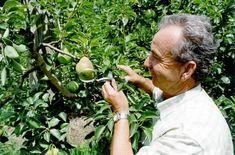
Every campaign needs a consistent crop to promote and prospects for this season’s Guyot and William’s are very good, according to Michel Fabre, chairman of the French national pear committee.
While weather conditions ranged across the temperature scale from cool during blossom time to drought as the fruit swelled, quality has been unaffected. It is expected that volumes will prove to be in line with last year. "We will not know until harvesting is finished," said Fabre. "The most significant aspect however is that the fruit is well-sized with a good skin finish and there has been little if any sign of mis-shapen fruit."
Both varieties are capable of producing around 90 per cent Class I, after 15 per cent has been deducted for culling. The average yield is some 30 tonnes a hectare and unofficial estimates point to a crop of 60,000t of Guyot and 80,000t of William’s respectively.
Fabre supports the view shared in the region by both independent producer/exporters and executives of the large fruit co-operatives; that the UK still has an untapped potential between July and September to replace the last imported southern-hemisphere varieties and winter-stored European fruit. The Sopexa mailshot emphasises that fruit is harvested fresh and close to the market.
There is also an underlying feeling of confidence within the industry, which over the years has seen both prices and production sway, and often become imbalanced.
The result in the 1970s and 80s was that many smaller growers, who could trace their family history back two generations, found pear production uneconomical. As pear orchards took far longer to bear fruit than apples or stone fruit, planting new orchards was a long-term investment.
"The result was that many switched to other fruit, or continued and found themselves absorbed because the orchard size was too small, " explains grower/exporter Jean-Michel Durand. His family began growing pears in the 1960s and has expanded by merging with or acquiring neighbouring growers.
"The result is that production has stabilised after dropping from 8,000 hectares to 6,000ha," says Pauline Treohan-Raphalen, who is responsible for the national pear section at the Bassin Rhône Mediterranée (BRM).
Representing the four giant regions of the Rhône Mediterranean, Auvergne, Languedoc-Roussillon, Provence-Alpes-Cote d'Azur and Rhône Alpes, it is massive in scale, representing 120 producer organisations, 10,000 growers, and 75,000 acres of more than 40 different types of fruit and vegetables with an annual value of over e1 billion.
Subdivided into grower representative crop organisations, BRM links into a network of private and national experimental stations, establishing national marketing strategies. As importantly, it is both a link and sounding board directed at national government and Brussels.
But the key element, which has given the industry a stronger backbone, Durand believes, is a change of attitude. "The industry has had to develop a new way of thinking, " he says. "We have to be totally professional if we are to thrive in the competitive market place."
This covers a wide range of disciplines from being linked to assured produce schemes, EurepGAP accreditation with full traceability, to keeping a strict eye on how orchards perform and the cost of production, packaging and storage. Durand is developing a new level of computer technology with a French company, which will consolidate information by orchard blocks as small as a single hectare.
There is another recent element which Fabre believes will tempt more UK buyers to this region of France, which already supplies them with a largest part of their summer fruit needs.
While the Rhône Valley is the largest pear-producing region of France, accounting for some 60 per cent of the total national crop, its expansion has been based on green-skinned, white-fleshed varieties. There are now trials with varieties such as Elliot and a Canadian pear called Harrowsweet.
Perhaps more significantly for the export markets, there is greater interest in red-skinned and blushed fruit. "We know that it is popular with UK supermarkets who want to widen the range and make a point of difference,” says Fabre.
Orchards of Forelle, a French variety that is already in full production in South Africa and well-known to the market, is already becoming commercial in a small way near Cavaillon. There are also two lesser known types, Red Satin and Cascade, just starting to yield and for these too, Fabre is optimistic.